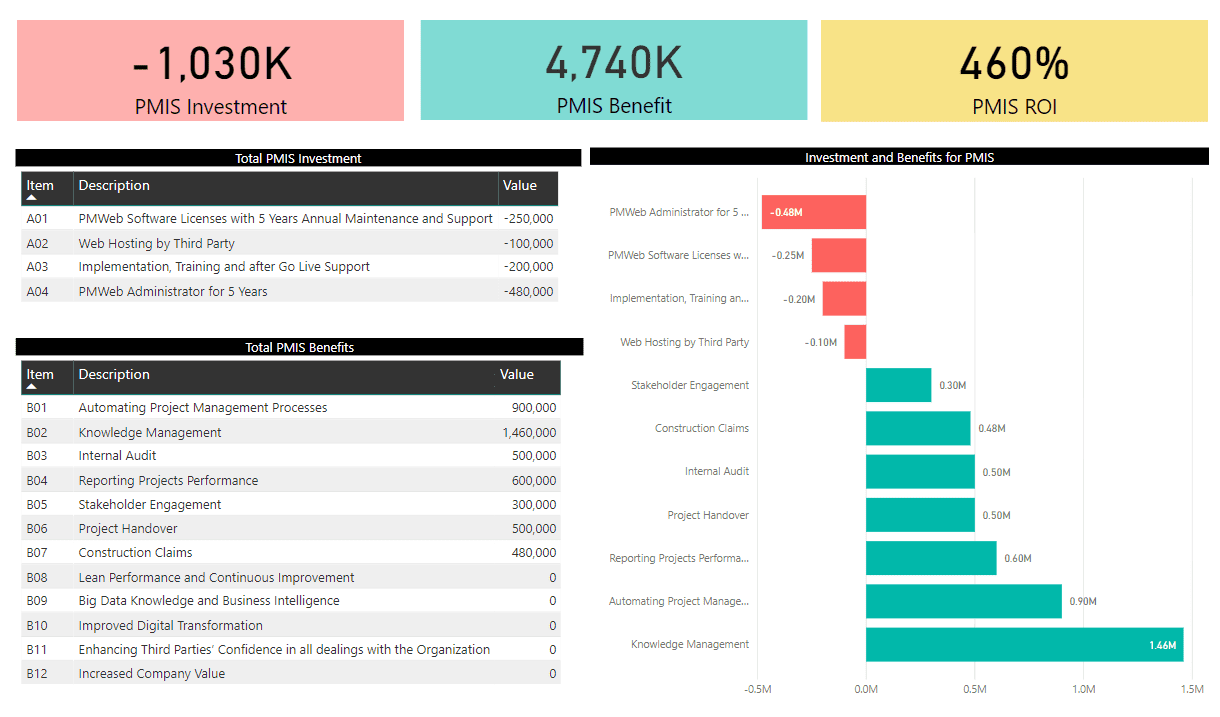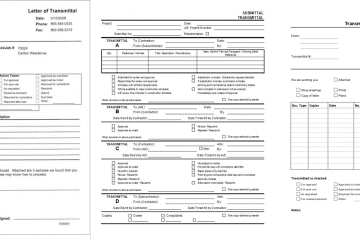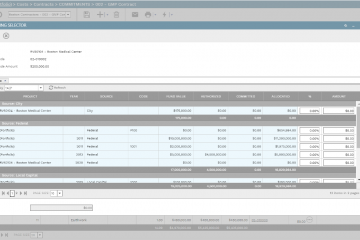Many organizations who are involved in delivering capital projects and are keen on reducing the likelihood of the high risk of projects’ failure strongly believe that digital transformation could help them in achieving this goal. This would include investing in building information modeling (BIM), business analytics, project management information systems, internet of things (IoT) among others. Similar to other business investments, those organizations need to justify those digital transformation investments by assessing their return on investment (ROI).
The adoption of project management information systems (PMIS) like PMWeb is one of the fastest growing trends in digital transformation for capital projects in particular by project owners and project management consultant firms. Those organizations better understand the drastic impact that delayed and over-budget projects can cause to their business. They also understand the importance of enforcing projects governance, transparency and accountability across all parties involved in delivering their projects’ investments. In addition, they understand the high value of having real-time access to everyday projects’ trust-worthy big data to give them the insight for better and faster informed decisions.
The ROI assessment for implementing a PMIS shall consider the investments that the organization needs to undertake in acquiring the PMIS software, hardware and web-hosting, configuring and implementing the PMIS, and providing training and support to the ongoing adoption and support of the PMIS. The return on the investment is the benefits that the adoption of a PMIS brings to the organization, which are many.
The PMIS Adoption Scope of Work
Let’s assume that there is a real estate developer who is interested in implementing the PMIS on three of their high-profile projects at stage 1 and then rolling it out to their other projects. As a priority, the organization wants the PMIS to:
- Upload and store all project documents in folders and subfolders that match the filing system that they have decided to adopt on their projects. The filing system should be flexible enough to allow modifications to meet each specific project’s own unique requirements, if any.
- Capture the details of every company that the organization has a business relation with.
- Capture the high level of all projects that the organization is currently investing in as well as projects that are under consideration by the organization.
- Capture all project records needed to administer everyday communications, which include correspondence, transmittals, request for information (RFI), meeting minutes, safety incidents, actions, etc.
- Capture all project records needed to enforce quality assurance and quality control, which include submittals, material delivery, site inspection, material inspection, non-conformance reports (NCR), snag list or punch list, etc.
- Capture everyday events through the contractors’ daily reports.
- Maintain an updated register of all risks with their pre-mitigation and post-mitigation likelihood and impact.
- Capture the details of all schedule submissions including baseline, revised and updated schedules for which they will be developed using Oracle Primavera P6.
- Capture the details of pre-contract and post-contract commercial aspects of the projects which include budget versions and the planned budget cashflow, budget adjustments and transfers, awarded contracts, potential, pending, approved and disputed change orders, progress invoices for approved work in place and actual payments made against the approved invoices, miscellaneous invoices that are not part of the awarded contracts, internal and external funding provided by the corporate office as well as banks and tabular and graphical reporting needed to report the projects’ financial status
- Capture the monthly progress report that the consultant Resident Engineer needs to provide at the end of month.
The same scope of work should be rolled out to other projects after the completion of the above for the first three projects, which the organization needs to complete within 16 weeks. Although the organization has a project management procedure that documents the project management processes to be used in delivering their projects, nevertheless, they decide to use the out-of-the-box forms and reports that PMWeb provides. For those forms and reports, they want to add their logo and use their corporate colors to brand those forms and reports.
The organization adopts the traditional design, bid then construct project lifecycle delivery. The consultant and the contractor will be provided restricted access to PMWeb PMIS. Each contractor will be provided with five access points, one for their project manager, another for the submittal coordinator, the third for the document controller, the fourth for the QA/QC engineer to submit request for inspections as well as track the closure of NCRs, and the last will be for the engineer responsible for the daily reports and site safety incidents. None of those licenses will have access to the cost management module.
The Needed PMIS Setup
The consultant will be provided with 10 licenses. Those are for the Resident Engineer, QS/Cost Engineer, Planning Engineer, Site Inspector(s), Discipline Engineers and Document Controller. Two of those 10 licenses have access to the cost management module.
As the project owner, they decide they need 20 licenses to be used by the head of projects department and other members of the of the projects departments. In addition, access is given to selected senior management and executives of the organization. Ten of those licenses are determined to have access to the cost management module.
In other words, the real estate developer would need to invest in acquiring 65 licenses of which 16 will have access to the cost management module. As the analysis is based on a 5-year investment, an additional four years of annual software maintenance and support is added as well as having a separate PMWeb instance for testing and training. The organization also selected to subscribe to online PMWeb training using PMWeb University for the 5-years to ensure PMWeb knowledge is shared by anyone working on their projects. This brings the total software investment to $250,000.
In addition, the organization has decided to use the services of one of the many reputed data centers to host the PMWeb PMIS solution rather than investing in acquiring and maintaining their own web servers. The 5-year cost associated with this data center is $100,000.
For the software implementation, configuration, training and after go-live support, it was agreed to have two resources, a PMWeb Consultant and PMWeb Report Writer, for a period of 6 months where implementation will be for four months and two months for after go-live support. The cost of this professional service is $200,000. In addition, the organization wants to have their own dedicated PMWeb Administrator responsible for supporting PMWeb users and maintaining the PMWeb application. This adds an estimated cost of $8,000 for 5 years, $480,000. This brings the total PMIS investment to $1,030,000.
Quantifying the Benefits
The ROI from Automating Project Management Processes
One of the key benefits of automating project management processes is the increased efficiency in submitting, reviewing, approving and sharing the contents of those processes. By replacing the manual or semi-manual processes of completing the project management forms, distributing those forms for actions and then getting the updated status with an automated process that PMWeb will bring, one could assume that this will bring at least 30% efficiency improvement. In addition, there is the additional benefit of enforcing governance, transparency and accountability while improving the efficiency in executing those processes. As this benefit affects all those involved in delivering each project, we assume that there will be $5,000 savings from the wasted effort per month per project. This brings the total anticipated ROI to $900,000.
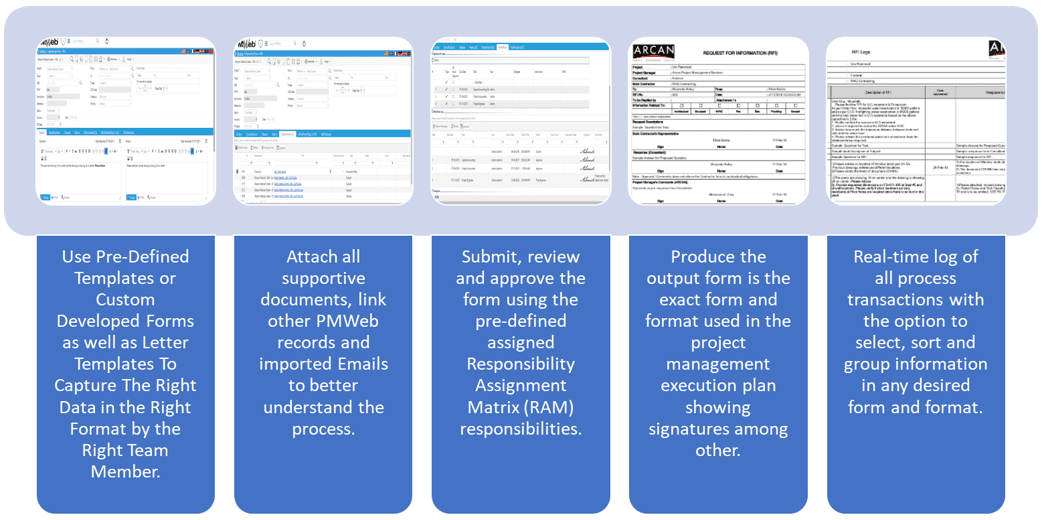
The ROI from Knowledge Management
The benefits of stopping the knowledge wasted by capturing and analyzing the everyday projects data and lessons learned is massive, taking into consideration the massive talent drain facing the engineering and construction in general and the GCC region in particular. Knowledge could be related to what material to use and what not to use, contractors and suppliers’ performance, risks and how best to respond to them, cost estimates, dealing with contract agreements, among many others.
The organization not only has access to all of the above data from the project management processes captured in PMWeb, but can enforce a formal Lesson Learned process to ensure that knowledge gained and best practices are formally captured, analyzed, and shared. For this benefit, we assume that the value of this captured knowledge is $200 per day per site. Since we have three projects and the head office, this will be $800 per day for five years. This equals a total anticipated ROI of $1,460,000.

The ROI in relation to the Internal Audit
The real estate developer has strict governance requirements which are being monitored and controlled by their internal audit department. The automation of the project management process enforces governance, transparency and accountability as well as provides the documents and records at the granular level required by the internal audit. The PMWeb cost ledger provides a single source for all financial transactions that occurred during the project delivery. Each transaction is linked to the record used in capturing its details. This helps in drastically reducing the effort and duration needed by the internal audit department to do their assessment and submit their findings report. The internal audit department anticipates that this saving could be quantified at $100,000 per annum or $500,000 for the five years.
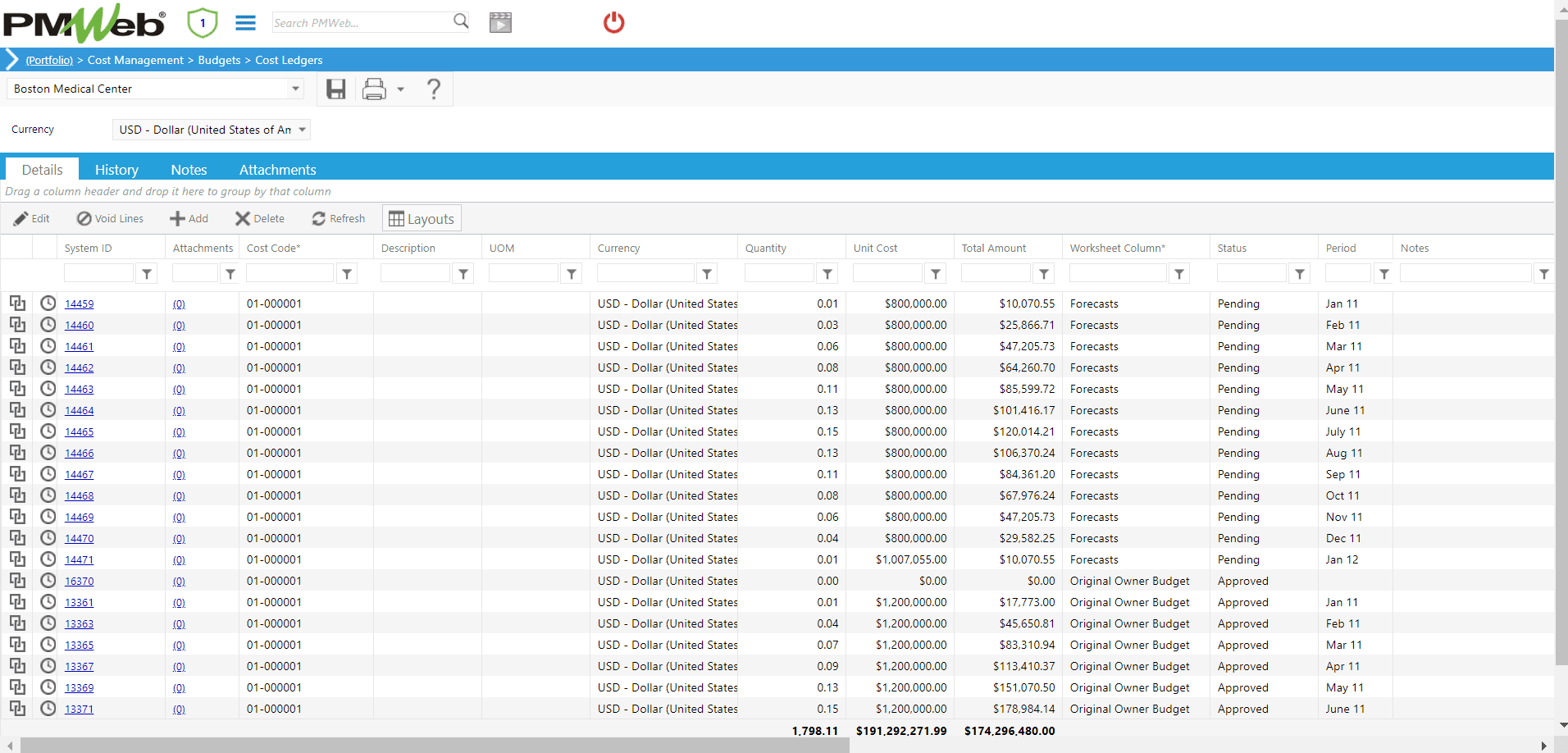
The ROI from Reporting Projects Performance
It is estimated that organizations who continue to use MS XLS as their platform for monitoring and evaluating the performance of the projects, waste 65% of their senior project management team members in consolidating, analyzing and reporting the projects’ performance data. In addition, the period between the cutoff date of the captured data and when the performance reports and dashboards are available to be presented varies between 3 to 6 weeks. In other words, the presented information is not valid anymore.
On the other hand, PMWeb provides all those reports and dashboard into a real-time single version of the truth form and format that can be accessed by authorized users anytime, anywhere using any device. Accordingly, one can easily assume that this could bring at least $10,000 savings per month when it comes to reporting project’s real-time performance. This totals to $600,000 for the five years.
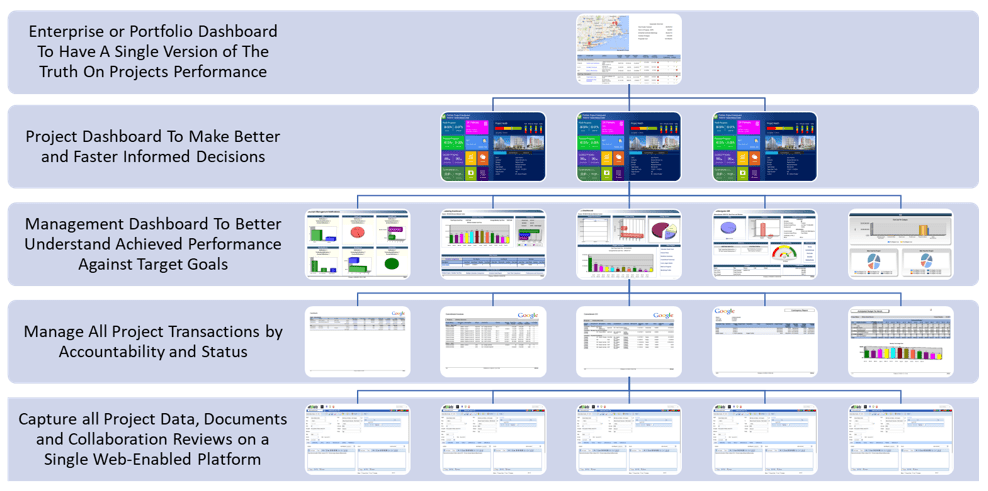
The ROI from Improved Stakeholder Engagement
The benefits of improved stakeholder engagement by sharing trustworthy projects performance and status reports and dashboards could be massive. Not only does it help in building trust and confidence with those stakeholders, but it also helps in keeping them engaged in the project delivery by keeping them aware of the progress and status in the form and format that matters to them most. This drastically reduces conflicts that usually occurs on projects when stakeholders feel left out or like the last one to know.
Quantifying the benefits of having more engaged stakeholders and with less conflicts is not that easy to determine. Nevertheless, let’s assume that the organization has five key stakeholders that they need to manage. Trustworthy dashboards designed to their own needs that they can access on their own when they desire, regardless of their location, save the projects department at least one day of effort to resolve conflicts and respond to stakeholder queries and needs. This saved effort estimates at $1,000 per month per stakeholder. This brings the total anticipated ROI to $300,000 for 5 years.
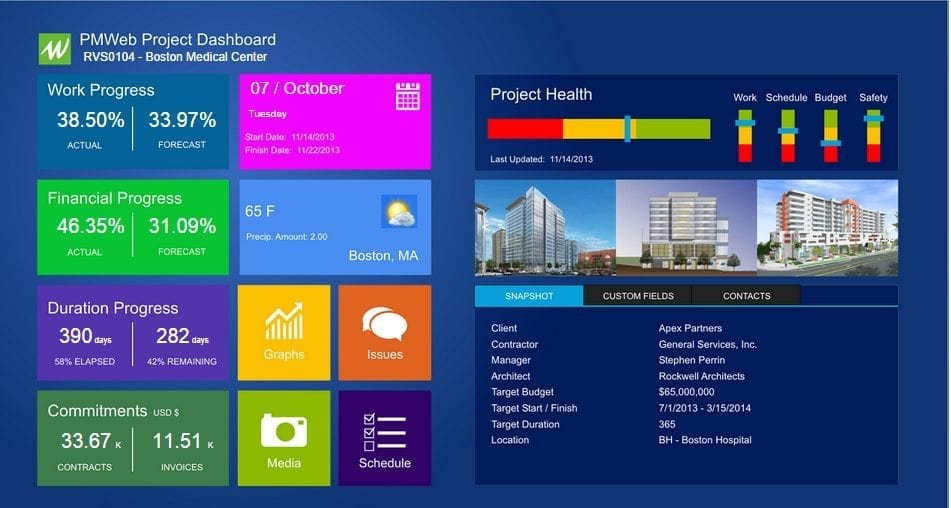
The ROI Seen at Project Handover
One of the key challenges in handing over a project is the snag list of items that need to be rectified by the contractor before the project can be considered complete. One of the recommended practices is to use the Snag List as an Observation Report where the assigned supervision consultant captures and shares defects during the project execution as soon as they are identified rather than delaying this process toward the completion of the project. This not only helps the contractor in rectifying those defects as soon as they are identified but also reduces the list of pending snag items when it comes to handing over the project.
We assume that there are 10 projects to hand over during those five years and that implementing such best practice using PMWeb Snag List saves 5 days from the duration given to the contractor to rectify the snag list items. Assuming that for the project owner each day saved in handing over the project for operations can generate a revenue of $10,000, then the estimated total benefits could reach $500,000.
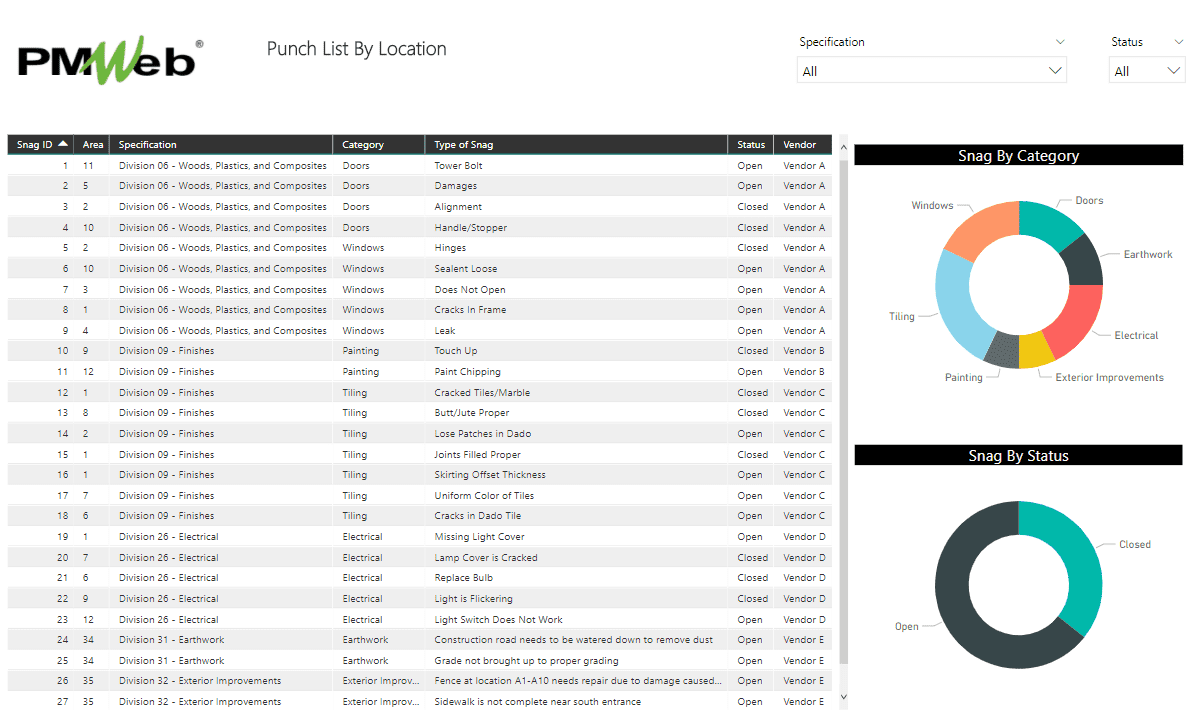
The ROI from Managing Construction Claims
No one can deny that construction claims in the GCC in particular and globally in general are on the rise. The decline of new project awards, projects at low profit margins, liquidated damages claims for late completion are rising in frequency and amount, and tough pressure on margins among other issues are compelling owners and contractors to become more contentious and adversarial thus resulting in growing volume of claims and disputes.
The benefits of having online access to all project’s documents and records that can be searched to identify documents and reports needed to either support the submission of a claim or support the response of a counter-claim are massive. Actually, they can be the deciding factor of who has better chances to win or lose the claim. This brings an anticipated saving of $2,000 per month per project for the time-consuming effort spent in searching and locating the requested documents. This is a total saving of $480,000.
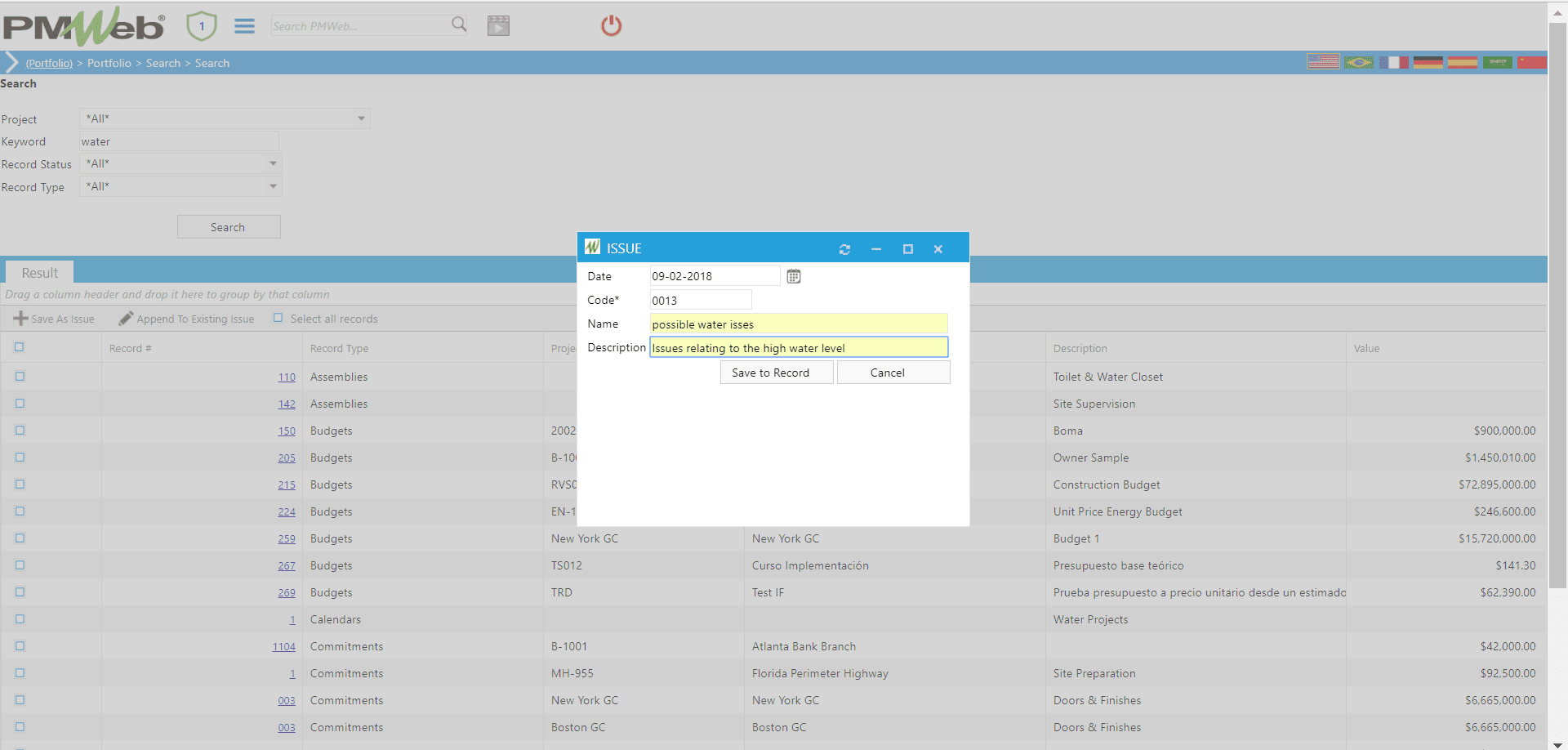
Other Benefits
Using a PMIS like PMWeb is not limited to the benefits listed above but actually there are many other benefits that an organization can gain from using such platform. To list a few:
Lean Performance and Continuous Improvement
By automating the project management processes, the organization now has a platform to assess those processes and find ways to improve their performance. Some organizations decide to eliminate and combine some of their processes after implementing them in PMWeb, as some of them were found to be redundant with no added value for having different templates for each. Actually, the ability of PMWeb conditional workflow to add the conditions and branches to match the different approvals authority levels made it easy to combine different manual-based processes into a single automated process.
Big Data Knowledge and Business Intelligence
The capturing of current projects’ big data with the option of migrating completed projects’ data to PMWeb or a data warehouse, provides the organization with access to a massive knowledge database that can help in analyzing trends, correlation and exceptions that can improve their current and future projects delivery. In addition, it enabled senior executives to visualize the projects performance data as part of the enterprise business analytics and data visualization dashboards.
Improved Digital Transformation
With the availability of projects data in a digital format, integrating, associating and blending this data with other digital data captured from ERP application, cost estimating, planning and scheduling, building information modelling (BIM), Internet of Things (IoT) among others, will enable the organization to achieve their desired digital transformation strategy and gain the benefits from this strategy. For example, the data captured in the PMIS can now become part of the BIM model by having the right integration between the two applications.
Enhancing Third Parties’ Confidence in all dealings with the Organization
The organization needs to obtain funds to bridge the time between making expenditures to build the three projects and obtaining revenues from leasing or selling them. The funding agency takes a risk that the organization may not pay back the loan as agreed. Thus, the interest rate provides a certain compensation for bearing risk coupled with the risk of default is the risk of inflation. Interest protects against future rises in inflation. That is why it is common to find that the interest rate to finance such projects could vary by around 3% depending on the organization risk exposure. Having a PMIS like PMWeb where all financial transactions are available to be audited and reported on helps the organization in getting better project finance terms and condition.
Increased Company Value
The documented and automated project management processes, the captured and documented knowledge management, the improved governance, transparency and accountability, improved internal audits, the effective projects monitoring and evaluating among others are all considered as organizational assets that enhances the organization’s corporate image and shareholders’ confidence. It also helps in improving the value of the organization should they decide to become a publicly traded company.
The Anticipated ROI for Adopting a PMIS
The total of anticipated benefits for using PMWeb for 5-years is $4,740,000. With an estimated invest of $1,030,000, the ROI of using a PMIS like PMWeb could reach 460%. Of course, the value of the benefits listed above as well as what value the other benefits can bring to an organization when using a PMIS like PMWeb depends on each organization perspective of those benefits. Some could be lower to what was estimated while others could be much higher. Another important point to consider is that more than 40% of the investment cost for acquiring the software licenses and implementation is a one-time investment. Contrarily, the estimated benefits are ongoing with a trend of growing more when more mature project management information system environment becomes available and the PMIS solution is used to its full capabilities.
